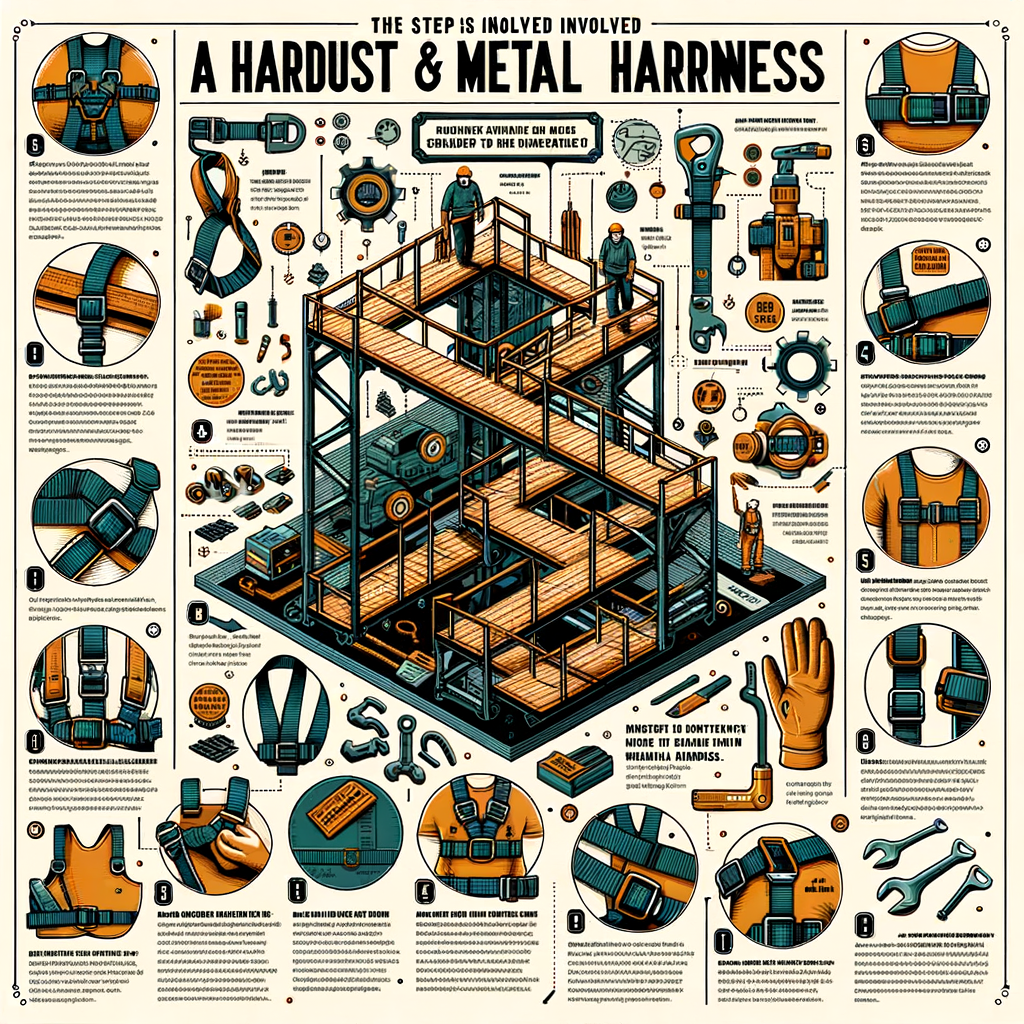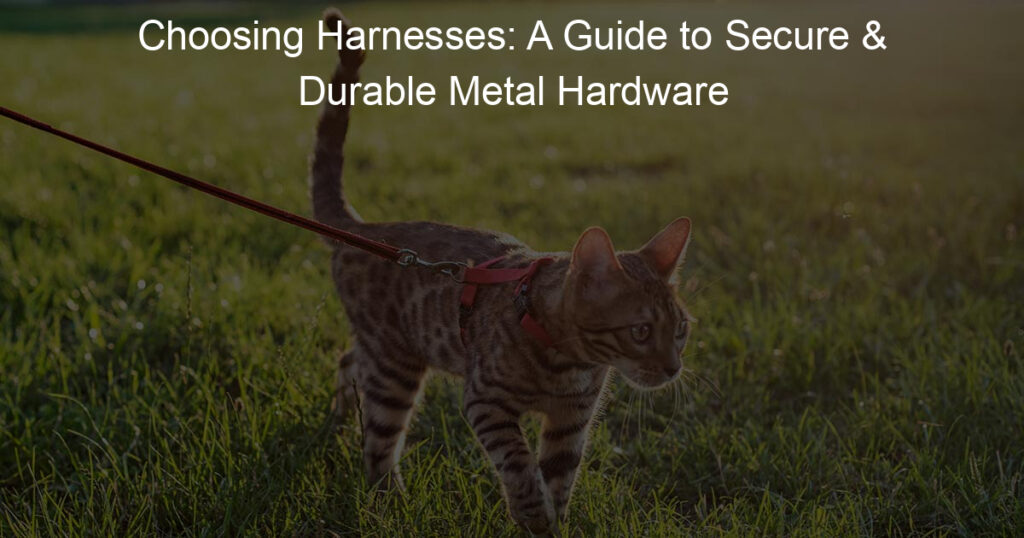
Introduction to Harness Selection
Choosing the right harness is a crucial decision that can impact safety and efficiency in various activities. This guide will help you understand the importance of selecting secure harnesses and the factors to consider during the selection process.
- Importance of Choosing Secure Harnesses
- Factors to Consider in Harness Selection
- Fit and Comfort: The harness should fit snugly but comfortably. An ill-fitting harness can cause discomfort and even injury.
- Material: The material of the harness should be durable and able to withstand the rigors of the activity you’re engaging in.
- Safety Features: Look for harnesses with safety features such as double-locking buckles and fall indicators.
- Standards Compliance: The harness should comply with safety standards set by regulatory bodies.
When it comes to harnesses, safety should be the top priority. A secure harness provides the necessary support and protection, reducing the risk of accidents and injuries. It’s not just about comfort or style; it’s about your safety and well-being.
According to a study by the National Safety Council, improper harness use contributes to approximately 3,500 serious injuries annually. This statistic highlights the importance of choosing a secure harness that fits well and meets safety standards.
When selecting a harness, various factors come into play. These include:
Remember, the right harness can make a significant difference in safety and performance. So, take your time and make an informed decision.
Understanding Harness Metal Hardware
When it comes to harnesses, the metal hardware plays a crucial role in ensuring safety and durability. This section will delve into the different types of metal hardware used in harnesses and the characteristics that make a harness durable.
- Types of Metal Hardware for Harnesses
There are several types of metal hardware used in harnesses. Each type has its unique features and benefits. Here are some of the most common ones:
- Buckles: These are used to fasten the harness around the body. They are usually made of stainless steel or aluminum for strength and durability.
- D-Rings: These are used as attachment points for other equipment. They are typically made of high-strength steel or aluminum.
- Snaps: These are used to quickly connect and disconnect parts of the harness. They are often made of stainless steel for corrosion resistance.
- Carabiners: These are used to connect the harness to a rope or other equipment. They are usually made of aluminum or steel and have a spring-loaded gate for easy use.
- Characteristics of Durable Harnesses
A durable harness is one that can withstand the rigors of use without failing. Here are some characteristics to look for:
- Quality Materials: The metal hardware should be made of high-quality materials like stainless steel or aluminum. These materials are known for their strength and durability.
- Good Construction: The harness should be well-made, with strong stitching and no loose parts. The metal hardware should be securely attached to the harness.
- Corrosion Resistance: The metal hardware should be resistant to corrosion, especially if the harness will be used in wet or humid conditions.
- Load Rating: The harness and its metal hardware should have a high load rating, indicating that they can safely support the weight of the user and any equipment they are carrying.
In conclusion, understanding the types of metal hardware used in harnesses and the characteristics of a durable harness can help you make an informed decision when selecting a harness. Remember, safety should always be your top priority.
Selecting Harnesses: A Comprehensive Guide
When it comes to selecting harnesses, one of the most important aspects to consider is the metal hardware. This guide will help you understand what to look for in secure metal hardware.
Secure Metal Hardware: What to Look For
Secure metal hardware is crucial for the safety and durability of your harness. Here are the key factors to consider:
- Material Quality
- Design and Construction
- Security Features
The quality of the material used in the hardware can greatly affect the harness’s performance. High-quality metals like stainless steel or aluminum are often used because they are strong, durable, and resistant to rust. Avoid harnesses with hardware made from low-quality materials as they can break or corrode easily, compromising your safety.
The design and construction of the hardware are also important. Look for hardware that has a smooth finish with no sharp edges that could damage the harness or cause injury. The construction should be solid, with no loose parts or signs of weak welding. A well-designed and well-constructed piece of hardware will ensure the harness is secure and long-lasting.
Security features are another vital aspect to consider. These may include locking mechanisms, safety clips, or double-locking features that prevent accidental opening. These features add an extra layer of safety and should be easy to use, even with gloves on.
In conclusion, when selecting a harness, pay close attention to the quality of the metal hardware. It plays a significant role in the overall safety and durability of the harness. By considering the material quality, design and construction, and security features, you can ensure you’re choosing a harness that is both secure and built to last.
Durable Metal Hardware: Ensuring Longevity
When it comes to selecting the right harness, the durability of the metal hardware plays a crucial role. It’s not just about the immediate strength and security it provides, but also about how long it can maintain its integrity under different conditions. Let’s delve into the three key factors that contribute to the longevity of metal hardware in harnesses.
- Corrosion Resistance
- Wear and Tear Resistance
- Maintenance Requirements
Corrosion is a natural process that deteriorates metal over time, especially when exposed to moisture and air. It’s like the common cold for metal, it’s everywhere and can be hard to avoid. However, certain metals, like stainless steel and brass, are known for their excellent corrosion resistance. Harnesses made with these metals can withstand harsh weather conditions and still maintain their strength and functionality.
Everyday use can lead to wear and tear on the metal parts of a harness. This is where the quality of the metal comes into play. High-quality metals can resist the daily grind, ensuring the harness remains secure and safe for longer. For instance, harnesses with hardware made from high-grade aluminum or steel are known for their superior wear and tear resistance.
Like any other equipment, harnesses require regular maintenance to ensure their longevity. This includes cleaning and inspecting the metal hardware for any signs of damage or wear. The easier it is to maintain and clean the metal parts, the longer they will last. Therefore, when selecting a harness, consider the maintenance requirements of the metal hardware.
In conclusion, the durability of the metal hardware in a harness is determined by its resistance to corrosion and wear and tear, as well as its maintenance requirements. By keeping these factors in mind, you can select a harness that not only provides security but also stands the test of time.
Case Studies: Secure and Durable Harnesses in Action
Let’s take a closer look at how secure and durable harnesses are used in different scenarios. We have gathered three case studies that demonstrate their effectiveness in various fields.
-
Case Study 1: Industrial Use
In the industrial sector, safety is paramount. Harnesses are often used to ensure worker safety, especially in high-risk environments like construction sites. One such example is the use of harnesses by a leading construction company.
The company reported a significant decrease in workplace accidents after implementing the use of durable harnesses. The harnesses, made with high-quality metal hardware, were able to withstand the harsh conditions of the construction site, ensuring the safety of the workers.
Key Insight: Industrial-grade harnesses can significantly improve worker safety in high-risk environments.
-
Case Study 2: Outdoor Sports
Outdoor sports enthusiasts often rely on harnesses for safety. A case in point is a group of rock climbers who regularly use harnesses during their climbs.
They reported that the use of secure and durable harnesses gave them confidence during their climbs, reducing the risk of accidents. The harnesses were able to withstand the strain of the climbs, proving their durability.
Key Insight: Secure and durable harnesses can provide safety and confidence to outdoor sports enthusiasts.
-
Case Study 3: Animal Harnesses
Animal harnesses are another area where secure and durable harnesses are crucial. A dog training school shared their experience using harnesses for their training sessions.
They found that using durable harnesses made the training sessions more effective. The dogs were comfortable in the harnesses, and the trainers were able to control the dogs better. The harnesses also proved to be durable, withstanding the energetic activities of the dogs.
Key Insight: Secure and durable harnesses can enhance the effectiveness of animal training sessions.
In conclusion, secure and durable harnesses play a critical role in various fields, from industrial use to outdoor sports and animal training. The right harness can ensure safety, provide confidence, and enhance effectiveness.
Common Mistakes in Harness Hardware Selection
Now that we’ve discussed the basics of harness selection and the importance of secure and durable harnesses, let’s delve into the common mistakes people often make when choosing harness hardware. By being aware of these pitfalls, you can make more informed decisions and select the best harness for your needs.
- Overlooking Material Quality
- Ignoring Design Flaws
- Not Considering Durability Factors
- Importance of Secure and Durable Harnesses
- Factors to Consider in Metal Hardware Selection
- Learning from Case Studies
- Avoiding Common Mistakes
- Recap of Harness Selection Principles
- Final Thoughts on Secure and Durable Harnesses
One of the most common mistakes is overlooking the quality of the material. A harness may look sturdy, but if it’s made from substandard materials, it won’t last long and could even pose a safety risk. Always check the quality of the materials used in the harness, including the metal hardware.
Another mistake is ignoring design flaws. A poorly designed harness can be uncomfortable to wear and may not provide the necessary support. Always look for a harness that is well-designed and suits your specific needs.
Not considering durability factors is another common mistake. A good harness should be able to withstand the rigors of use without breaking or wearing out quickly. Consider factors such as the harness’s resistance to wear and tear, its ability to withstand different weather conditions, and its overall durability.
It’s crucial to understand the importance of secure and durable harnesses. A secure and durable harness can provide the necessary support and safety, reducing the risk of accidents and injuries. Always prioritize the security and durability of the harness when making your selection.
When selecting the metal hardware for your harness, consider factors such as the material’s strength, corrosion resistance, and weight. These factors can significantly impact the harness’s performance and longevity.
Case studies can provide valuable insights into the practical application of different harnesses. They can highlight the strengths and weaknesses of various designs and materials, helping you make a more informed decision.
By being aware of these common mistakes and taking steps to avoid them, you can select a harness that is safe, comfortable, and durable. Always take the time to research and compare different options before making your final decision.
In conclusion, when selecting a harness, it’s important to consider the quality of the materials, the design of the harness, and the durability factors. Additionally, understanding the importance of secure and durable harnesses and considering the factors in metal hardware selection can help you make the best choice.
Choosing a secure and durable harness is crucial for safety and comfort. By avoiding common mistakes and applying the principles we’ve discussed, you can select a harness that will serve you well for many years to come.












